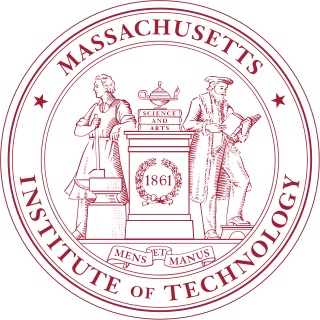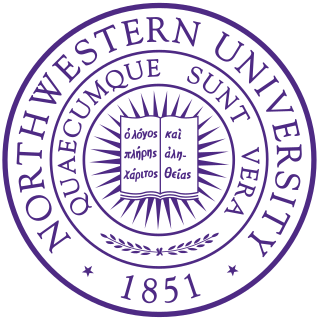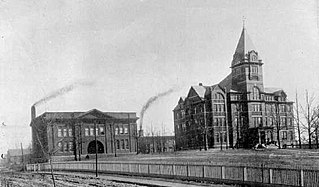
Massachusetts Institute of Technology (MIT) is a private research university in Cambridge, Massachusetts. The Institute is a land-grant, sea-grant, and space-grant university, with an urban campus that extends more than a mile (1.6 km) alongside the Charles River. The Institute also encompasses a number of major off-campus facilities such as the MIT Lincoln Laboratory, the Bates Center, and the Haystack Observatory, as well as affiliated laboratories such as the Broad and Whitehead Institutes. Founded in 1861 in response to the increasing industrialization of the United States, MIT adopted a European polytechnic university model and stressed laboratory instruction in applied science and engineering. It has since played a key role in the development of many aspects of modern science, engineering, mathematics, and technology, and is widely known for its innovation and academic strength, making it one of the most prestigious institutions of higher learning in the world.

Illinois Institute of Technology is a private research university in Chicago, Illinois. Tracing its history to 1890, the present name was adopted upon the merger of the Armour Institute and Lewis Institute in 1940. The university has programs in architecture, business, communications, design, engineering, industrial technology, information technology, law, psychology, and science. Its historic roots are in several 19th-century engineering and professional education institutions in the United States. In the mid 20th century, it became closely associated with trends in modernist architecture through the work of its Dean of Architecture Ludwig Mies van der Rohe, who designed its campus. The Institute of Design, Chicago-Kent College of Law, and Midwest College of Engineering were also merged into IIT.

Northwestern University (NU) is a private research university based in Evanston, Illinois, with other campuses in Chicago and Doha, Qatar, and academic programs and facilities in Miami, Florida; Washington, D.C.; and San Francisco, California. Along with its selective undergraduate programs, Northwestern is known for its Kellogg School of Management, Pritzker School of Law, Feinberg School of Medicine, Bienen School of Music, Medill School of Journalism, Media, Integrated Marketing Communications, School of Communication, and McCormick School of Engineering and Applied Science.
The Medill School of Journalism, Media, Integrated Marketing Communications is a constituent school of Northwestern University that offers both undergraduate and graduate programs. It has consistently been ranked one of the top schools of journalism in the United States. Medill alumni include 38 Pulitzer Prize laureates, numerous national correspondents for major networks, and many well-known reporters and columnists. Northwestern is one of the few schools embracing a technological approach towards journalism. Medill received a Knight Foundation grant to establish the Knight News Innovation Laboratory in 2011. The Knight Lab is a joint initiative of Medill and the McCormick School of Engineering at Northwestern, one of the first to combine journalism and computer science.

Tennessee Technological University is a public university in Cookeville, Tennessee. It was formerly known as Tennessee Polytechnic Institute (1915), and before that as University of Dixie, the name under which it was founded as a private institution in 1909. Tennessee Tech places special emphasis on undergraduate education in fields related to engineering and technology, although degrees in education, liberal arts, agriculture, nursing, and other fields of study can be pursued as well. Additionally, there are graduate offerings in engineering, education, business, and the liberal arts. Affiliated with the Tennessee Board of Regents, the university is governed by a Board of Trustees. Its athletic teams compete in the Ohio Valley Conference.

Lawrence Technological University (LTU), frequently referred to as Lawrence Tech, is a private university in Southfield, Michigan. Lawrence Tech was founded in 1932 in Highland Park, Michigan, as the Lawrence Institute of Technology (LIT) by Russell E. Lawrence. The university moved to Southfield in 1955 and has since expanded to 107 acres (0.43 km2). The campus also includes the Frank Lloyd Wright-designed Affleck House in Bloomfield Hills and the Detroit Center for Design + Technology in Midtown Detroit.

The Milwaukee School of Engineering (MSOE) is a private university in Milwaukee, Wisconsin. With 22 acres (0.089 km2), the campus is in the East Town neighborhood of downtown Milwaukee, close to major corporations, large and small companies, dining, theaters, sporting venues and parks. The school's enrollment of 2,820 includes 224 graduate students. As of Fall 2018, the university has a total of 138 full-faculty with over 33% who are women. The student-to-faculty ratio is 15-to-1.

Established in 1909, the Robert R. McCormick School of Engineering and Applied Science is one of twelve constituent schools at Northwestern University. Most engineering classes are held in the Technological Institute (1942), which students commonly refer to as "Tech." In October 2005, another building affiliated with the School, the Ford Motor Company Engineering Design Center, opened.

The Rock is a boulder on the campus of Northwestern University in Evanston, Illinois, United States, located in between University Hall and Harris Hall. It serves as a billboard for campus groups and events, and has been painted with different colors and messages over the years.

The National Taiwan University of Science and Technology abbreviated as NTUST or Taiwan Tech (臺科大), is a public technological university located in Taipei, Taiwan. Taiwan Tech was established in 1974 as the National Taiwan Institute of Technology (國立臺灣工業技術學院), as the first and the leading higher education institution of its kind within Taiwan's technical and vocational education system. Taiwan Tech is one of Asia's 10th rank as the best institute in science and technology.

The history of the Georgia Institute of Technology can be traced back to Reconstruction-era plans to develop the industrial base of the Southern United States. Founded on October 13, 1885, in Atlanta as the Georgia School of Technology, the university opened in 1888 after the construction of Tech Tower and a shop building and only offered one degree in mechanical engineering. By 1901, degrees in electrical, civil, textile, and chemical engineering were also offered. In 1948, the name was changed to the Georgia Institute of Technology to reflect its evolution from an engineering school to a full technical institute and research university.
The history of Northwestern University can be traced back to a May 31, 1850, meeting of nine prominent Chicago businessmen who shared a desire to establish a university to serve the Northwest Territories. On January 28, 1851, the Illinois General Assembly granted a charter to the Trustees of the North Western University making it the first recognized university in Illinois. While the original founders were devout Methodists and affiliated the university with Methodist Episcopal Church, they were committed to non-sectarian admissions.

University Hall is the oldest original building on the Northwestern University campus in Evanston, Illinois, and the second building to have been constructed after Old College, which stood on campus until the 1970s. The building has served a wide range of different roles since its construction, and currently houses the university's English department.
The campus of Northwestern University encompasses two campuses in Evanston, Illinois and Chicago, Illinois, United States. The original Evanston campus has witnessed approximately 150 buildings rise on its 240 acres (0.97 km2) since the first building opened in 1855. The downtown Chicago campus of approximately 25 acres (100,000 m2) is home to the schools of medicine and law was purchased and constructed in the 1920s and 1930s.
The Infrastructure Technology Institute (ITI) is a federally funded transportation research center at Northwestern University in Evanston, Illinois. ITI was founded by an $18 million grant in 1992, and in 1998 was named one of six "top tier" university transportation centers in the nation and awarded a $12 million, six-year federal grant through the Transportation Equity Act for the 21st Century. A primary focus of the work of ITI is structural health monitoring as well as advanced structural modeling methods. Currently, Professor Joseph Schofer is serving as a director of the institute.
The Segal Design Institute (“Segal”) is an educational institute within the McCormick School of Engineering and Applied Science at Northwestern University. Segal is dedicated to the study of human-centered design at the undergraduate and graduate level. The Segal Design Institute is co-directed by Greg Holderfield and Bruce Ankenman. In Spring 2016, Northwestern Engineering wrote about Segal in an article titled "Better Design Through Humanity."
McCormick Foundation is a Chicago-based nonprofit charitable trust established in 1955, following the death of "Colonel" Robert R. McCormick of the McCormick family. As of 2010, it had more than US$1 billion in assets.

Michigan Technological University's campus sits on 925 acres on a bluff overlooking Portage Lake.
Montgomery Knight was an aeronautical engineer who specialized in rotary-wing aircraft. He was the first director of the Guggenheim School of Aeronautics at the Georgia Institute of Technology and a founder of and long-time researcher at the Georgia Tech Research Institute.

The main campus of the Georgia Institute of Technology occupies part of Midtown Atlanta, primarily bordered by 10th Street to the north, North Avenue to the south, and, with the exception of Tech Square, the Downtown Connector to the East, placing it well in sight of the Atlanta skyline. In 1996, the campus was the site of the athletes' village and a venue for a number of athletic events for the 1996 Summer Olympics. The construction of the Olympic Village, along with subsequent gentrification of the surrounding areas, significantly changed the campus.














